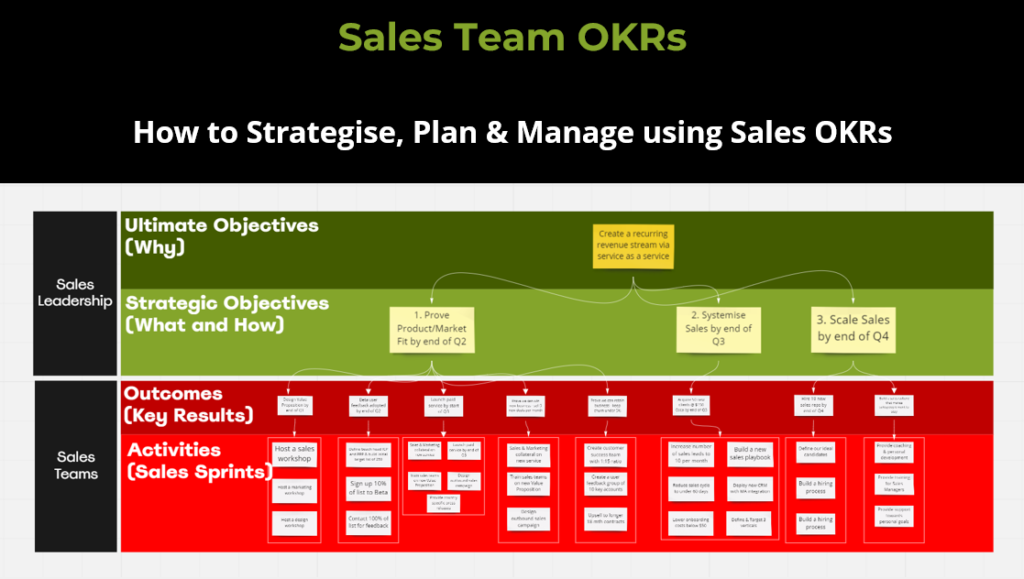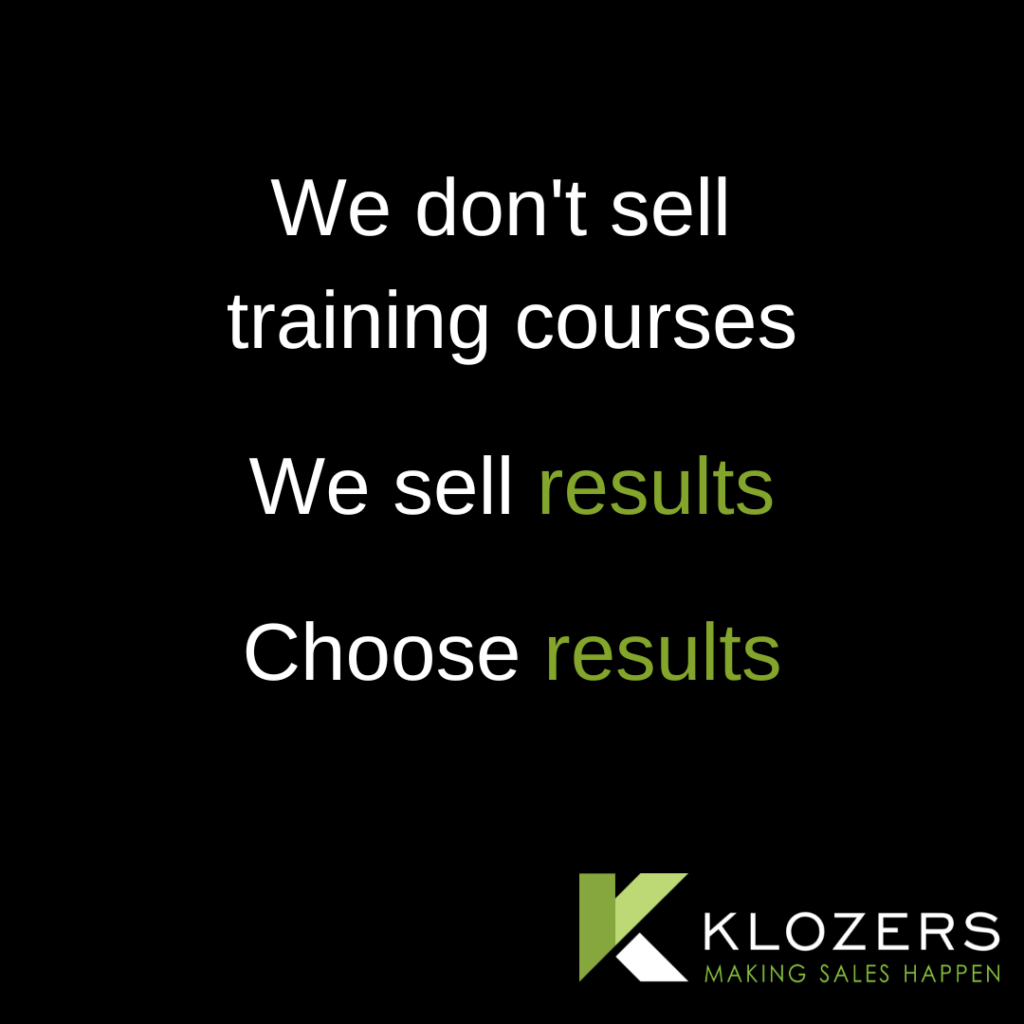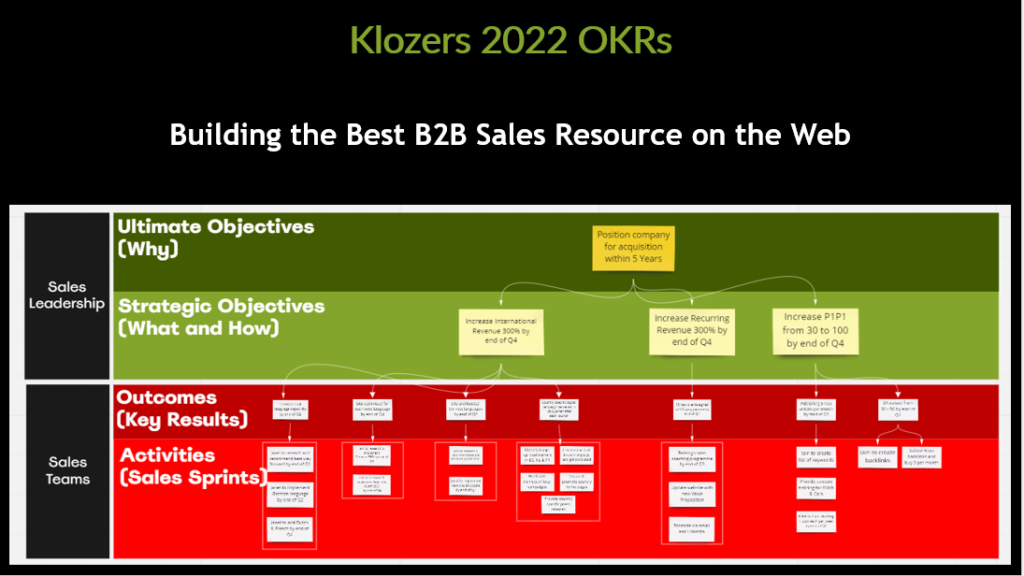As previously mentioned, one of the reasons our clients love our Sales Training is how we only train our clients on the same sales strategies and tactics that we use in our own business. We test and prove everything before we include it in any of our training.
The slide below shows our own Sales OKR examples that as a team we are working towards through the year. Not all our Strategic Objectives are on track and some are ahead and we are happy to share what’s working and what’s not.
Here’s a brief summary to help you understand:
Strategic Sales Objective 1
Increase International revenues 300% by end of Q4 – we are currently behind on this but our pipeline suggest we can still achieve this. I think we underestimated how much work was involved in getting set up for this, however, despite being behind this is really exciting.
Strategic Sales Objective 2
Increase Monthly Recurring Revenue 300% by end of Q4 – we are on target for this OKR which is great. With that said, in retrospect we perhaps were not ambitious enough when setting the original Objectives. By achieving this Objective we have now increased our Customer Lifetime Value which helps with our gross profit margin. Lots of wins with this particular goal.
Strategic Sales Objective 3
Increase P1P1 from 30 – 100 by end of Q4 – P1P1 refers to the number of keywords we have at Position 1 on Page 1 of Google which drives our Inbound Lead Generation. The Goal was to increase the number from 30 to 100 and considering we have over 250 keywords on Page 1 itself we thought this was achievable. This has however, proven to be much more difficult than we though and we currently only have 48 Keywords at Position 1. This means it’s taken 7 months to add 18 keywords to the top of Google and we need another 52 in the remaining 5 months. That is still a huge achievement and we still have a little over a Quarter to go so fingers crossed we can make up some ground.
Other Sales OKR examples we have supported our clients with are:
Sales Cycle – reducing the sales cycle which came from a Business Objective which was to improve cashflow in the organisation. Using the sales analytics from withing the clients CRM we undertook a thorough sales pipeline analysis to understand which deals where lagging, why they were lagging and what remedial action could be taken. Reducing the sales cycle was one of a number of activities that contributed to this.
Sales Process – most companies either lack a formal sales process or they have a sales process but their salespeople struggle to follow the sales process consistently. Improvements in sales process re typically linked to KPIs around sales performance.
Quarterly Revenue – as you would expect many companies are keen to drive growth and quarterly revenue is a common OKR that we encounter.
Monthly Recurring Revenue – monthly recurring revenue or MRR whilst predominantly associated with SaaS businesses, is a good indicator for every business that measures the sales from existing customers.
Channel Partners – channel partner development is common for those looking to scale quickly and profitably. Channel Partners, strategic partnerships and affiliate programmes are fast, low cost and proven routes to market.










